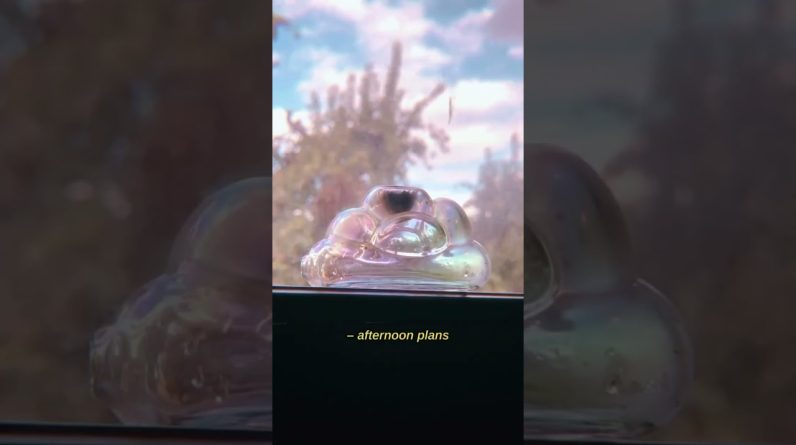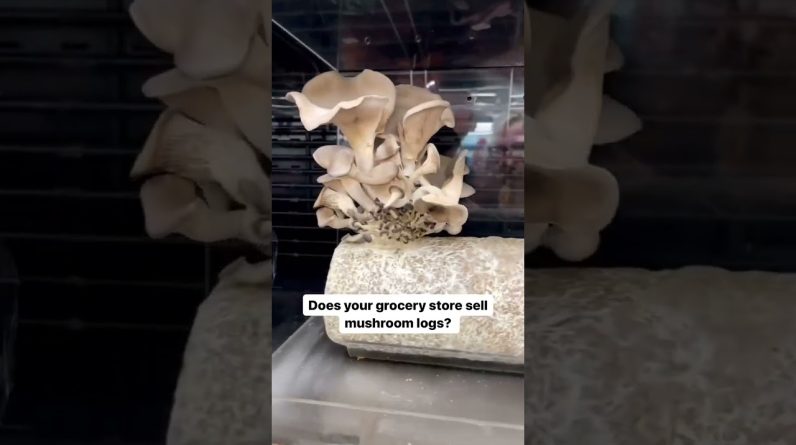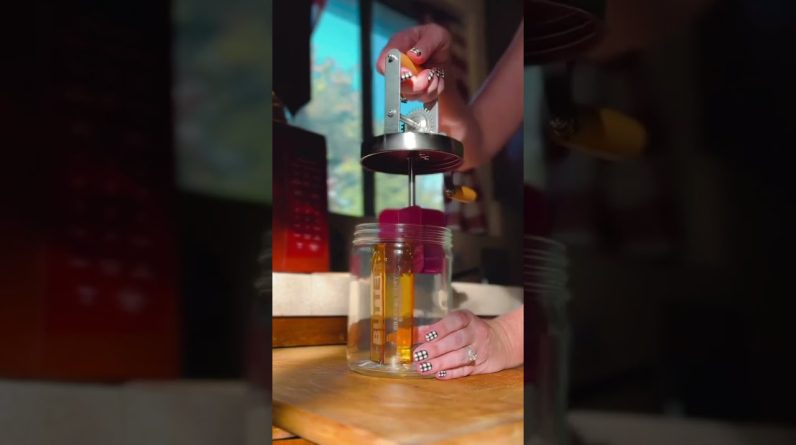Whether or not it’s for orchids, berries, or bananas, plant tissue tradition has been broadly utilized in agriculture for practically 40 years to provide uniform and disease-free inventory. However in relation to hashish, this know-how has solely emerged inside the previous few years as scientists working with weed cracked the code of what the plant desires to breed efficiently at a small scale. Becoming a member of within the struggle towards certainly one of pot’s main foes, hop latent viroid illness, hashish tissue tradition is a brand new path ahead in direction of preserving the genetics of one of the crucial numerous botanicals on the planet. And, whereas cultivators have been in a position to get their fingers on tissue culture-grown cuts for about eight years, tissue tradition clones have been made accessible to the general public for the primary time by way of Node Labs on the Emerald Cup Harvest Ball held in December 2022.
“Hashish is a really tissue tradition resistant plant. There are particular crops which might be that method,” says Lauren Avenuis, CEO of Node Labs, explaining why it took so lengthy for the know-how to turn out to be viable for hashish. “So, like avocados, grape vines, they simply don’t like to enter micropropagation. They don’t like that type of replication. And since hashish is an annual plant, it likes to develop from a seed, flower, and die.”
The scientists working with Node, a small lab positioned inside an unassuming purple barn in rural Petaluma, California, spent years learning tissue tradition earlier than discovering the methodology that made stem cell know-how for hashish work. Now that they’ve, their facility homes a formidable financial institution of hashish genetics. It causes a number of snickers after I say it aloud, however being inside a room stuffed with cabinets dedicated to tissue tradition clones, every in their very own container, jogs my memory of being in a pet retailer aquarium. All of the crops are rising inside a transparent jelly-like substance derived from seaweed known as agar, permitting their complete root construction to be seen. They’re terrariums that maintain the story of pot’s previous, current, and future.
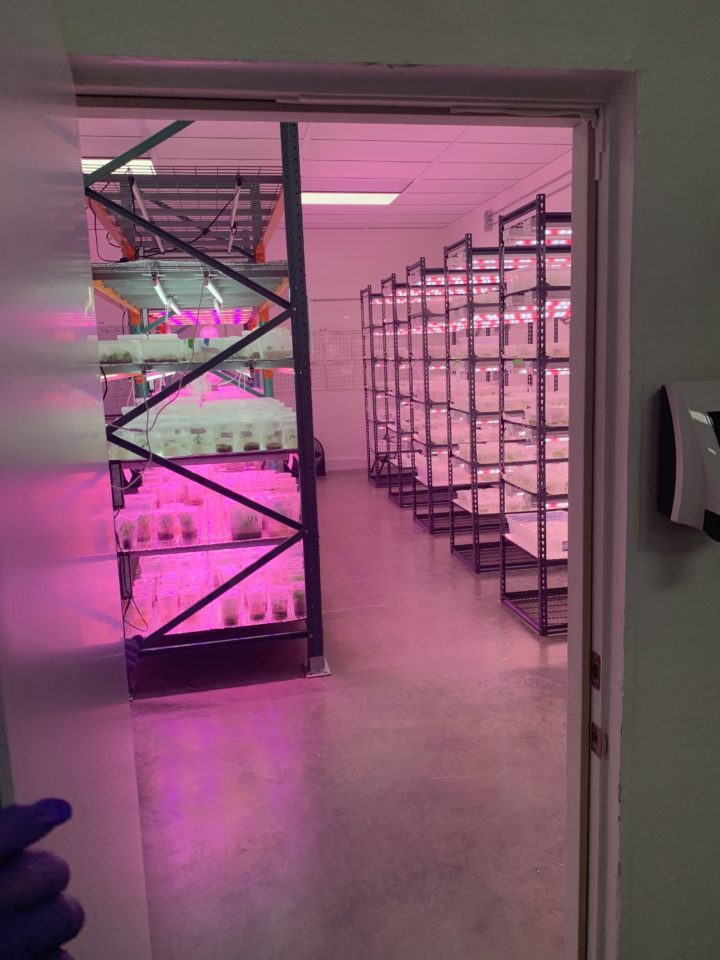
Chief Science Officer Chris Leavitt walks me by way of the procedures at Node by explaining that crops, in contrast to people, don’t have an consciousness of their complete physique.
“[Plants] are a colony of cells which might be connected to one another,” Leavitt says. “So if a stem is receiving all of the like sap that it will be getting usually within the agar, it doesn’t even know that it’s not nonetheless connected to the plant. You’ll be able to develop plant components in tissue tradition in a method you can’t develop exterior. You’ll be able to develop a dissection of only a leaf or only a stem… you possibly can actually break the foundations of typical plant rising by having it in that setting.”
My tour at Node begins within the pre-fab clear room the place the media, the agar, is combined inside an autoclave, a tool designed for sterilization. This room can be the place the opposite instruments used for the tissue tradition course of, similar to scissors and jars, are sterilized. I placed on a second set of surgical booties earlier than heading into the expansion chamber and switch room, the place I watch the recent agar being distributed into the identical clear plastic containers I see within the bulk meals part of my native grocery retailer. Inside this room, the air high quality is at ISO 8, a measure that incorporates a thousand specks of mud inside a cubic yard that can be utilized in digital and medical manufacturing. All of the sterilization and air cleanliness guarantee no contamination enters the lab.
“One of many issues that we do right here is we clear crops,” says Luis Mautner, Node’s director of propagation. “Cleansing crops is a course of by which you’re taking a plant from the surface world and also you run it by way of a course of that we developed right here. We choose the crops that don’t have any points related to them like pathogenic micro organism, fungi, fusarium being one of many ones that impacts the hashish business very a lot. Additionally, we index for HLVd, which is hop latent viroid.”
Mautner began working with hashish after a profession in tissue tradition that included work with the berry firm Driscoll’s and tropical decorative crops similar to peace lilies. He says the clear media is used as a result of it’s diagnostic and exhibits when issues shouldn’t be rising on the plant.
Subsequent, we enter one other room the place cabinets retailer hashish crops in varied phases of progress. There are additionally cabinets containing another crops Node is testing for analysis, together with wine grapes and the cutest tiny Tempranillo.
To begin work with Node, purchasers present 10 clone stems from a hashish plant to kind what Mautner calls a bouquet. The clones are damaged all the way down to the mobile degree as a result of hashish has a powerful affinity for endogenous contaminants inside its stem, Leavitt explains. The scientists at Node lower the clones down to at least one half, the meristem, a sort of tissue in crops that homes stem cells, or cells from which all different forms of cells develop.
“What you’re principally doing is taking [the cannabis clones] all the way down to primarily the stem cells of the plant,” Avenius says. “You’re eliminating the entire epigenetic, the entire genetic toggles associated to emphasize or atmosphere. You’re getting [the plant] all the way down to its pure expression, its genetics, after which additionally eradicating primarily all of the vascular tissue. So that you’re simply getting a model new pure instance and pattern of that hashish plant that we will now develop into tissue tradition freed from every other influences after which see its pure genetic expression.”
When lower all the way down to the meristem, the clones are solely about half a millimeter to a millimeter in measurement. As soon as the crops develop greater and begin trying like hashish crops as an alternative of little blobs, they’re examined for HLVd. HLVd is a widespread pathogen in hashish clones that causes progress stunting and reduces the plant’s capacity to provide trichomes. Leavitt explains that HLVd is like pores and skin most cancers in that it might probably have an effect on one a part of the plant, however not one other. That is one more reason tissue tradition has been such a invaluable software in combating the virus as a result of it reduces a plant to its most elementary parts.
After the crops have handed the in depth screening course of, they’re grown to about 3 to 4 inches and are used to fill the financial institution, the system wherein Node retains hashish genetics inside a genetic library.
“These two fridges play an enormous function within the giant genetics hashish market,” Avenius says as I eye Node’s genetic financial institution, containing work from hashish breeders like Sherbinski and Masonic in addition to corporations like Cannarado, Linked, and smaller growers like Sonoma Hills Farm, which banked its Pink Jesus.
The genetic financial institution facet of the corporate ties into the beginnings of Node Labs. Node was based in 2018 after Felipe Recalde, CEO of Compound Genetics and Node co-founder, misplaced his genetic library of hashish cultivars and his dwelling within the Tubbs Hearth, essentially the most harmful wildfire in California’s historical past that tore by way of Santa Rosa in 2017. Recognizing everybody round him had additionally misplaced their mother inventory, Recalde noticed tissue tradition as the long run for genetic preservation. He’d been experimenting with defective kits for tissue tradition since 2010. Nonetheless, it wasn’t till he partnered with Leavitt, who had been engaged on utilizing tissue tradition to protect endangered species, that he noticed that tissue tradition could possibly be viable for hashish. These days, genetics are saved inside the lab and at a spot offsite to function an extra backup towards a catastrophe like a fireplace.
A number of the work Node does is non-public consumer companies of storing the genetics, however some corporations like Linked Hashish Co. even have licensed genetics accessible for licensing. The consistency of the tissue tradition clones one receives from Node Labs ensures that manufacturers that function in lots of states, like one of many lab’s companions Khalifa Kush backed by rapper Wiz Khalifa, can present standardized, constant flowers throughout the nation. Node’s main partnership with Compound Genetics permits the lab to develop clones to flower for purchasers to check. The minds at Compound Genetics develop crops from seed of their San Francisco facility and phenohunt to offer the very best clone alternatives for his or her purchasers. The method at Node offers the genetics an authentication that doesn’t happen if somebody obtains a clone lower from a buddy.
The way forward for the tissue tradition business isn’t in creating 1,000,000 crops to order, however as an alternative holding genetics and delivering mom crops that growers can multiply by way of conventional propagation, Leavitt says.
“The primary functionary of [tissue culture] right here isn’t in micropropagation. It’s to not get you 50,000 crops in a single go,” Leavitt explains of the distinction in tissue tradition strategies in hashish versus conventional agriculture. “It’s germplasm storage, which is the flowery time period within the agriculture subject of holding genetics, genetic banking.”
One other indication of the way forward for hashish propagation occurring at Node Labs is the method of in vitro phenohunts or rising seeds inside the agar jelly inside check tubes. Node takes a tissue tradition from small plantlets the seeds produce and grows these crops out, saving time for cultivators as a result of in the event that they just like the outcomes, the tissue tradition already exists.
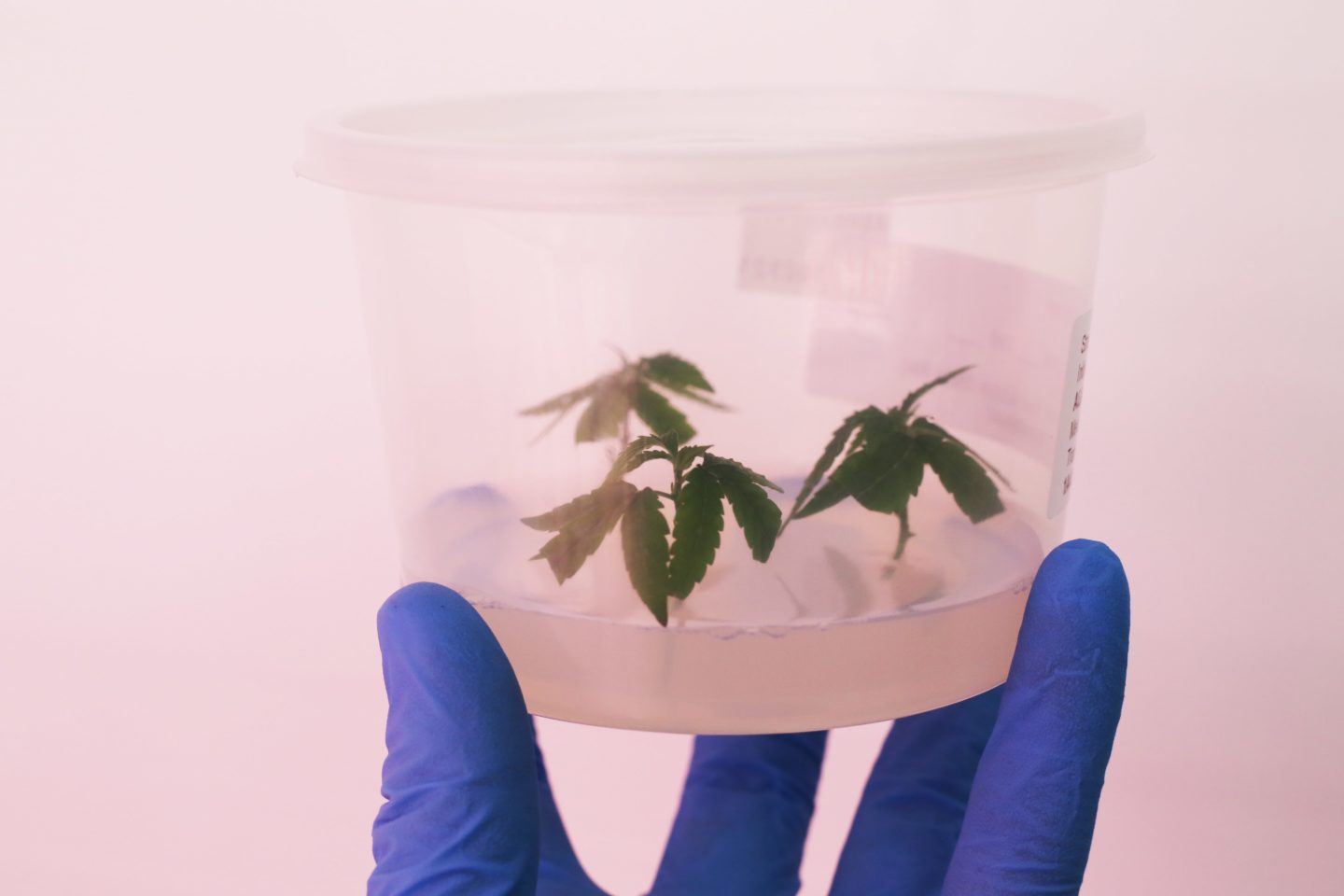
“It permits us to avoid wasting loads of time, nevertheless it additionally signifies that once we pop that seed after which we take that clone and put it out, we have already got a few of the benefits of tissue tradition the primary time we develop,” Avenuis says. “As an immature plant, it hasn’t been uncovered to any viruses or pathogens. After which it has a few of the distinctive morphology that you just get from tissue tradition crops. They have an inclination to have larger vigor, larger yields, higher stem power. So that you’re already seeing a better-performing plant from the very starting.”
Leavitt factors out an instance inside the lab, Gastro Pop #5, a cross of Apples & Bananas and Grape Fuel which was developed in-house by way of an in vitro phenohunt.
“That Gastro Pop #5 over there, the crops on this lab have by no means seen microbial fungus and micro organism of their complete life,” Leavitt says.
If somebody finds an impressive cultivar they’re in love with, a six-month course of to get a tissue tradition clone may stunt the thrill, he explains.
“With that course of, in vitro, we may have the thrill of smoking the joint and going ‘That is the one’ and going, ‘Cool, it’s right here on the lab’ on the identical time,” he says.
An in vitro phenohunt is how Sherbinski and Compound created Tribute, a cross of Gelato #41 and Apples & Bananas. Look out for future collaborations between Compound Genetics and Tiki Madman and Compound Genetics and Inexperienced Home Seed Firm.
On the Emerald Cup Harvest Ball held in December 2022, Compound was in a position to provide “naked pulse” tissue tradition clones of their latest choices. These got here with out the agar jelly as a result of the clones are extra transportable that method. The naked pulse half comes from the truth that they’re naked root or saved with out soil across the roots. The naked pulse clones might be planted in a selected medium and turn out to be a mom plant to energy a develop with constant genetics.
“We love this as the following gen of clones,” Avenuis says.
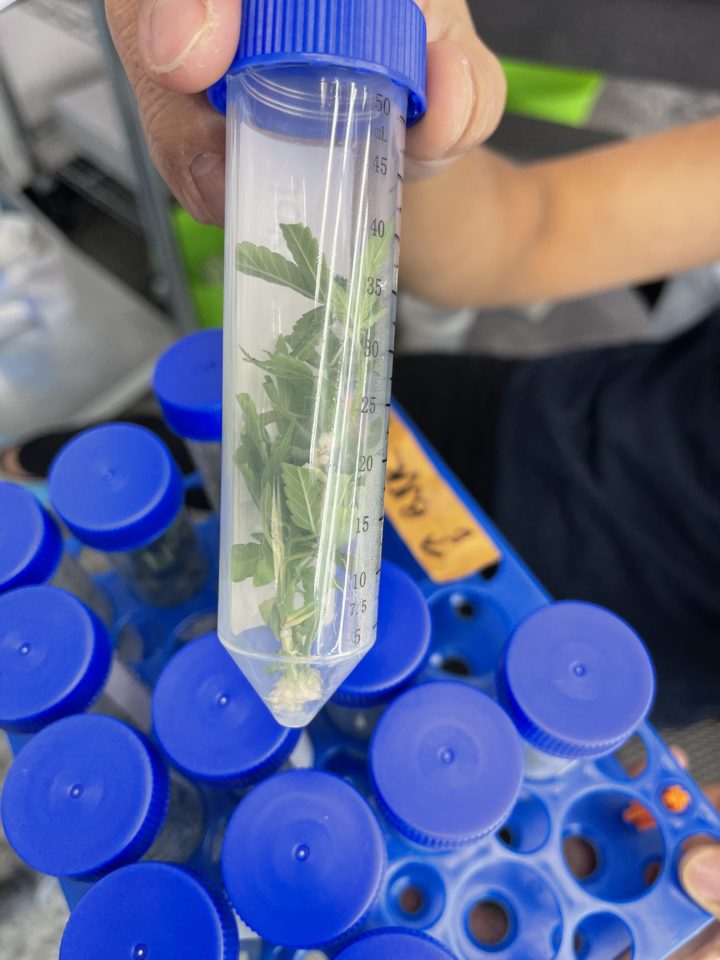
The entire strategy of tissue tradition clones is an thrilling new frontier for hashish, one which I used to be in a position to expertise firsthand when Recalde gifted me a tissue tradition clone at a social gathering. I took the check tube, stuffed with a clone held in suspense inside what I’ve since realized is agar, dwelling and grew it out to flower. On the time, I didn’t know that miniature plant contained inside a check tube had the mighty makings to energy a model.
Learn extra about Node Labs within the upcoming Science & Know-how subject of Excessive Occasions Journal.
The submit Weed’s Tissue Tradition Second Has Arrived appeared first on Excessive Occasions.


